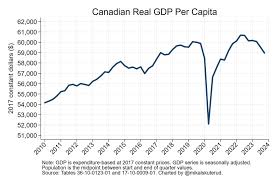
Introduction to Canada’s GDP
Gross Domestic Product (GDP) is a critical indicator of economic health, reflecting the total value of all goods and services produced in a country. Understanding Canada’s GDP is essential as it not only provides insight into the nation’s economy but also helps guide policy decisions and investments. In recent years, Canada has experienced significant economic fluctuations influenced by various factors including global trade dynamics, natural resource prices, and the pandemic’s aftermath.
Current State of Canada’s GDP
As of Q2 2023, Canada’s GDP showed signs of resilience amid global economic uncertainty. The country’s GDP grew at an annualized rate of 3.2% in the second quarter, following a modest growth rate of 1.4% in the first quarter. The rebound is attributed to stronger consumer spending and robust exports, particularly in the energy and technology sectors. According to Statistics Canada, the total GDP reached approximately CAD 2.3 trillion.
Despite these positive indicators, inflation rates remain a concern, hovering around 5.6%. The Bank of Canada has responded with adjustments to interest rates to curb inflation without stifling economic growth. The challenge remains to balance these monetary policies while encouraging sustainable growth.
GDP by Sector
The services sector continues to dominate Canada’s GDP, accounting for about 70% of the total economic output. This includes finance, healthcare, and retail, which have all shown resilience post-pandemic. The energy sector, particularly oil and gas, remains a cornerstone of the economy, contributing significantly to export revenues. Manufacturing also plays a crucial role, though it faces challenges from international competition and supply chain disruptions.
Future Outlook
Looking ahead, analysts forecast that Canada’s economy will maintain a steady growth trajectory but with potential headwinds. The Conference Board of Canada projects that GDP growth will stabilize around 2% in 2024, as global economic conditions normalize and consumer confidence strengthens. Policymakers emphasize the importance of investing in clean technology and innovation, which are pivotal for diversifying the economy and enhancing resilience against future disruptions.
Conclusion
Canada’s GDP is a vital measure of its economic performance, reflecting both challenges and opportunities. As the country navigates through a complex global landscape, understanding these dynamics will be essential for businesses, investors, and policymakers alike. With proactive measures, Canada aims to not only recover from past uncertainties but also position itself for sustainable growth in an evolving economy.



